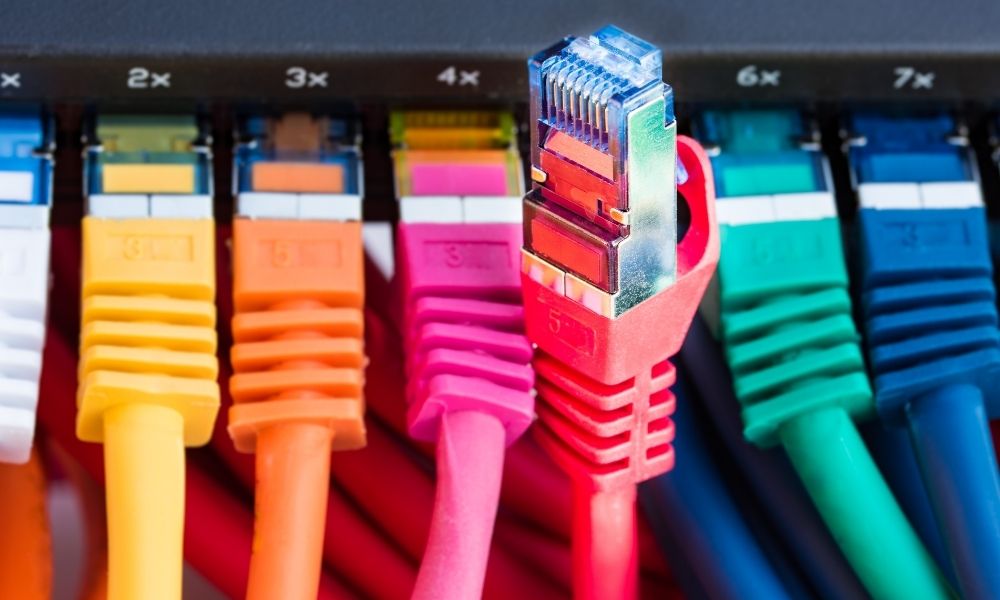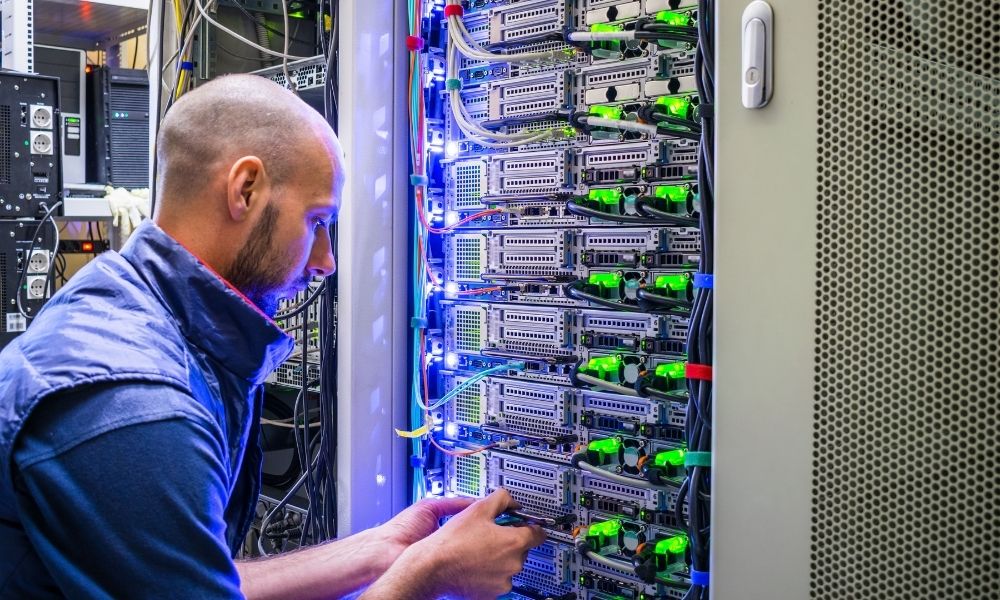
Companies have joined the digital landscape to take advantage of its vast opportunities. Technology has enhanced communication between businesses and clients while boosting companies’ productivity. Though the world of technology offers immense benefits for businesses, there are obstacles that they must be aware of. Companies can take certain measures to improve their relationship with technology, such as maintaining upgrades and increasing network accessibility.
Why Does It Matter?
Before you invest in essential technological upgrades for your business, you may be wondering what difference they will make. Securing the proper tech equipment for your company has substantial advantages that would be negligent to overlook prior to making purchases. CableWholesale has broken down how your company will benefit from making a few fundamental upgrades to its technological domain.
Improve Security
The evolution of technology has created some serious improvements for business security. You can protect your company from internet hackers with various technological upgrades. Cases of cybercrime have increased along with businesses’ digital presence.
Hackers and cybercriminals who crawl the web seek out vulnerable business data and may violate your company’s security on three different levels: network, system, and data. Your business should take different approaches to secure all three areas, as they each pose differing threats.
A breach in cybersecurity can leave a company with malware on their devices and a damaged status. A simple update in software can prevent losses or exploitation of tons of precious company data. Exposed company data can lead to serious legal consequences that are costly to your business’s budget and reputation.
Increase Productivity
Technological upgrades boost productivity. Most companies employ a multitude of applications and programs that employees can utilize. It is necessary that these apps run as efficiently as possible to promote maximum productivity in the workplace.
Old computer systems often lag and have inconvenient wait times for uploads, downloads, and reboots. Help your devices run faster and smoother by maintaining updates and opting for high-speed internet when available. Doing so will save you time and money in the long run.
Maintenance
Another way your business can save time and money is by opting for low-maintenance technology. Old devices tend to be temperamental and wear out over time. After a while, some equipment will become virtually useless if not if you do not maintain it through proper upgrades. A device that runs poorly poses a major disadvantage to your company’s productivity levels. Avoid investing money on repairs for nearly obsolete tech systems—you are better off with a full replacement.
Compatibility
When old devices and new software collide, things can get chaotic. Old equipment often fails to be compatible with new updates or systems. This can lead to excessive downtime or inconvenient and detrimental crashes in your company’s data system. Upgraded devices ensure compatibility with the ever-changing technology and promote a stronger connection with local networks.
How Should You Upgrade?
Now that you have considered how essential technological upgrades for your business will be advantageous in the workplace, it is time to learn about your options. CableWholesale has listed a number of upgrades that you can apply to your business to improve productivity and overall success.
Replace Software and Hardware
Outdated devices that use old software in the workplace result in slow productivity rates. Before office technology starts to impact your company’s workflow, replace your software and hardware.
Invest in high-quality tech equipment to avoid costly maintenance issues in the future. Keep your software updated to ensure your programs work as efficiently as possible.
Boost Cybersecurity
Cybersecurity companies have enhanced their approaches to keep business data even safer than before. The more present your company is online, the more likely it is there are weaknesses in your data system for hackers to violate. Protect your business online by allocating a portion of your company’s budget toward cybersecurity. Routine IT assessments and risk management programs are a great way to increase your digital materials’ safety.
Utilize the Cloud
Many companies utilize cloud computing for digital storage. Uploading files to cloud storage removes the need to keep as much data on company computer systems, thereby freeing up space and streamlining processes. Consider upgrading your storage to a cloud system to improve business flexibility and work efficacy.
Consider Mobile Interface
Customers everywhere have transitioned to using their smartphones to make purchases. When your business upgrades its interface, be sure that it is mobile phone friendly. Grow your business by updating your webpage. During the configuration process, verify that your website is compatible with mobile phone screens. Mobile web design leads to a greater audience reach and, eventually, a larger profit.
Upgrade Broadband
Unreliable broadband creates many limitations on effective business strategies. Have a strong network in your office to decrease downtime and prevent any connectivity issues. Employ a cat5e Ethernet cable or invest in faster broadband to develop a better and faster internet connection to workstations.
Focus on SEO
Search engine optimization is a key way to get your business noticed. Ranking high in search results will increase your company’s visibility to potential customers. Your business can gain tremendous familiarity and name recognition just by showing up on the first page of search results. The better your company ranks in various searches, the more reliable your site appears. Digital marketing utilizes online features such as email, social media, website ads, mobile apps, and, of course, search engines to improve your company’s reach.
Update Your POS
Point-of-sale systems should be just as up to date as the rest of your business. You want to have a trustworthy and well-encrypted POS system to assure customers that their information is protected. There are also new innovations in POS tech that enrich interactions between company and client.
A Final Note
With the inarguable presence of technology in the modern world, it is vital to most companies’ success that they stay up to date on the latest upgrades. Technology is ever-changing, making it that much more important for companies to keep updating systems incrementally. Maintaining technical equipment in the workplace is a crucial aspect of business productivity and device efficacy.
No matter what items you need to maintain your tech system’s high quality, CableWholesale has an extensive catalog of digital devices to help you find what you are looking for. Time waits for no one, so get in touch today to see how you can best upgrade your company’s digital features.












